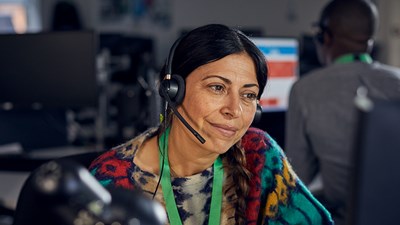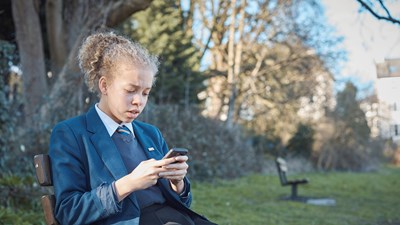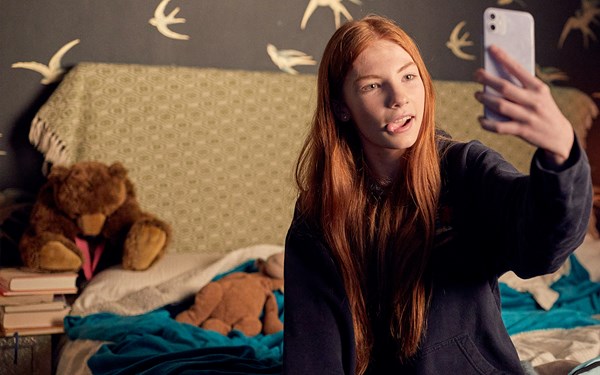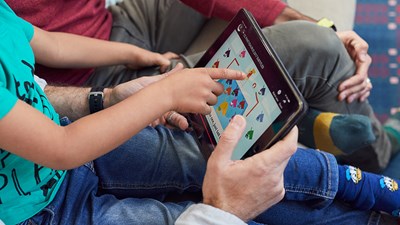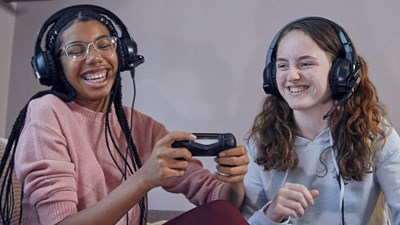What is livestreaming?
Livestreaming is broadcasting to an audience in ‘real time’. The audience can leave comments, give likes to the person who is streaming and, in some cases, ‘gift’ the streamer. Some platforms let several people livestream at the same time.
Children and teenagers are likely to have spent more time on livestreaming and video apps in the last few years. While many children will be using these apps to talk to friends or family, some children may be talking to people they don’t know, or sharing personal information without realising. We’ve got advice to help you understand the risks and keep them safe.
Young people and children like to livestream and use video apps for lots of reasons. These include:
- learning or show others how to do something; livestreams of people playing video games are particularly popular
- staying in contact with family and friends
- taking part in viral trends, such as challenges
- being creative or as a means of self-expression
- relaxing – many video apps have ‘satisfying content’, such food being prepared or ASMR
- entertainment – there is lots of funny content, or linked to hobbies or trends
- or even to making money or becoming an influencer.
What are the risks of livestreaming?
As with most things children do, there can be negatives as well as positives, which includes risks to the safety or wellbeing of children. The risks can be different depending on whether a young person is hosting or watching livestreams.
Risks of hosting a livestream
Because livestreaming and video chat happens in real time, young people may feel under pressure to behave in a certain way so that people will keep watching their channel. It can help to talk to your child about what is and what isn’t appropriate behaviour online.
Being behind a screen and a feeling of anonymity may result in children feeling less inhibited or shy. They might end up sharing personal and private information, or acting in a way that they wouldn’t act in the real world in front of people.
Talk to your child about this and give them examples of things they shouldn’t be sharing, such as age, location, date of birth, telephone number etc. You can help by:
- reminding your child not to share any personal information online, like where they live or go to school. Remember to explain that where they’re livestreaming could give this information away
- making sure their location settings are switched off, so that they’re not able to share their location with anyone
- talking to your child about the things that they can safely share, like their interests and hobbies.
Many websites and social media apps, including video and livestreaming apps, allow unknown people to talk to children and vice versa. It’s useful to explore the different sites and apps that your children like to use and check the features, such as privacy and reporting/blocking tools.
Explore the features together and make sure their ‘friends’ are real friends who they actually know. If your child is receiving sexual or grooming contact, you can report this to CEOP.
Many apps allow for comments. Your child may feel upset or embarrassed if they’ve received inappropriate comments from others. It’s important that you talk with your child about any features (or lack of) within an app before allowing them to share video content or going live.
You can look for settings that enable comments to be turned off and how to report content. We also have lots of advice if your child is experiencing bullying.
Conversations and livestreams can be recorded and shared across other social networks, without knowledge or consent. Your child may lose control over their video and where it's been shared.
Some service providers can be contacted and the content taken down, but others will only remove if the content is illegal or violates their terms and conditions. It is important that your child is aware of this so that they can moderate what they are sharing or doing.
- Reassure them and offer support – remind them they can always talk to you, another trusted adult, or Childline.
- Don’t blame your child. Try avoiding questions like "Why have you done this?" which might stop your child opening up to you.
- Worried about how to support a young person who has had a sexual image or video of themselves shared online? If they’re under 18, they can use Childline and the Internet Watch Foundation's discreet Report Remove tool to see if it can be taken down. Young people can get support from Childline throughout the process.
Risks of watching a livestream
Many sites and apps have no or very poor age verification processes, meaning there is a risk your child may see upsetting or inappropriate content, such as sexual, abusive, violent content. This can result in a range of emotions such as worry, anxiety, and confusion.
It’s important to let them know that they can always come to you or a trusted adult if they see something upsetting such as inappropriate or explicit content and also explore the features available to block or report inappropriate content. Sometimes your child may not wish to talk to someone they know about this, let them know they can always call Childline on 0808 1111.
You can help by:
- learning how to support your child if they see inappropriate content online
- reporting any sexual images or videos to CEOP
- setting up parental controls in your home.
Comments on livestreams aren't moderated and can include content that would be upsetting to both the person livestreaming and anyone else reading the comments.
Look at the reporting options on the platform and make sure your child knows how to report inapproriate or upsetting comments.
Need advice about online safety?
If you’re stuck, not sure what to do, or if you’re worried about your child, you can also contact our trained helpline counsellors on 0808 800 5000.
Childline also has lots of information about online and mobile safety that will help you and your child.
Tips to help keep your child safe
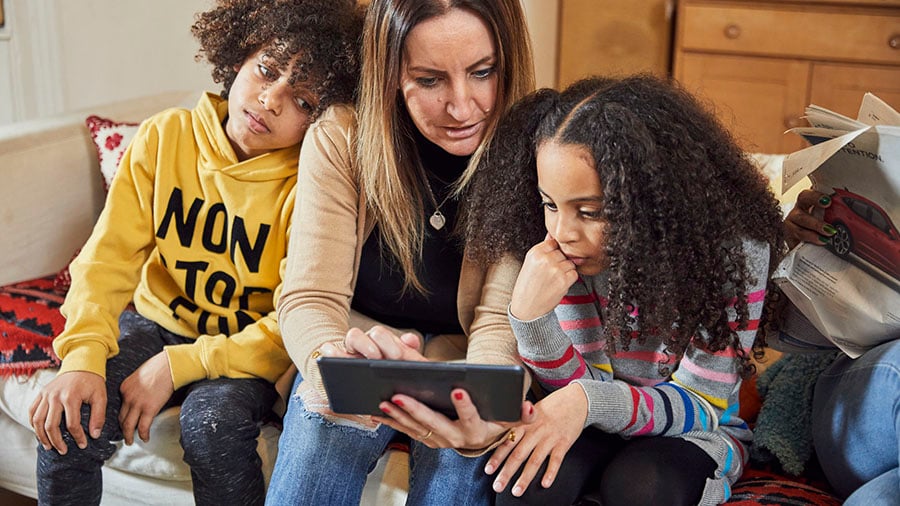
- Talk to your child - Talk to them about what they're doing online and how to stay safe. Let them know they can come to you, or another adult they trust, if they feel worried or upset by anything they've seen online. They can also get support from Childline on 0808 1111.
- Explore apps and sites together - Explore what your child likes to do online together. This can help you to understand why they're using certain. Explore the features that are available, which would include privacy settings, location settings, and how to block and report.
- Agree what's appropriate together - Agree your own rules as a family when using apps, sites or games. You can use our family agreement template to help get you started.
- Check your settings - Check the technology your family uses and use privacy and location settings to keep your child safe. You can call your mobile and broadband provider to find out how to do this or visit our parental controls page to find out more.
What are the main livestreaming platforms?
There are specific livestreaming apps such as Twitch and Yubo, but young people can livestream on other platforms including Facebook and Instagram. There is also video chat in groups or one-to-one using apps like WhatsApp.
During lockdown children and young people also became more familiar with conferencing apps such as Zoom.
Age rating: 13+
Main features: Popular with gamers, Twitch is a live streaming site and app for users 13+ that lets you stream live gameplay for others to watch and comment on in real time.
Age rating: 18+
Main features: Used for livestreaming with others around the world. You can also interact with people nearby and the app openly promotes contact with strangers.
Age rating: 18+
Main features: Monkey uses live streaming (video chat) to randomly connect you with other users. The design of the app is very child-like yet it is designed for adults.
Age rating: 13+
Main features: This is a free online chat site which allows you to talk via text chat or video call one-to-one with random strangers; you have no control over who you can talk to.
Age rating: 13+
Main features: Which is a video sharing app that lets you shoot, upload and share 15 second videos. Anybody can comment on videos and all videos can be downloaded by others.
